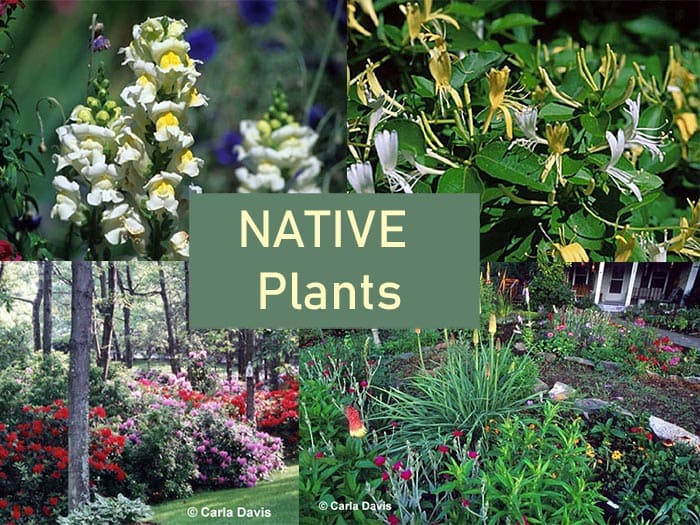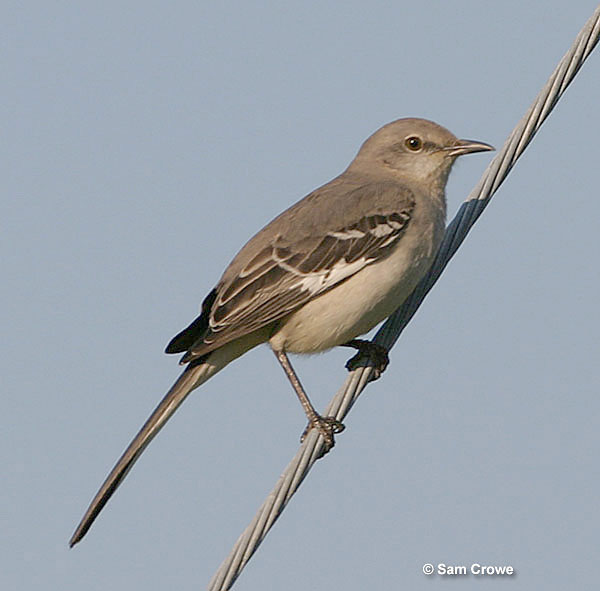
Wisconsin Plants for Wildlife Habitat & Conservation Landscaping – especially for providing cover and food for birds
Trees
Tall–Eastern Hemlock, , Eastern White Pine, Balsam Fir, Common Juniper, Norway Spruce, Northern Pin Oak, Bur Oak, Shagbark Hickory, Butternut, Black Walnut, White Oak
Medium/Small–Serviceberry, Eastern Redbud, Wild Plum, Pie Cherry, Amur Chokecherry, Common Chokecherry, Eastern Red Cedar
Shrubs
Summer food–Highbush Blackberry, Northern Dewberry, Black Raspberry, Red Raspberry, American Elderberry, Lowbush Blueberry, Highbush Blueberry, Lingenberry
Fall food–Red-osier Dogwood, Winterberry, American Mountain Ash, Gray Dogwood, Silverberry, Inkberry, Common Juniper, Canada Yew, Bearberry
Winter food–Bittersweet, American Highbush Cranberry, Glossy Black Chokeberry, Viburnums, Northern Bayberry, Sumacs, Red Chokeberry, Common Snowberry, Wolfberry, Coralberry, Wayfaringbush, Nannyberry, Spicebush
Butterfly, Bee & Moth
New Jersey Tea, Buttonbush, Sweet Pepperbush, Spicebush, Pussy Willow, Narrowleaf Meadowsweet, Wolfberry, Coralberry, Preston Lilac, Old-fashioned Weigela, Dill, Asters, Sweet William, Sweet Pea, Sweet Marjoram, Black- eyed Susan, Scarlet Sage, Hollyhock, Indian Hemp, Intermediate Dogbane, American Columbine, Swamp Milkweed, Prairie Milkweed, Common Milkweed, Butterflyweed, New England Aster, Turtlehead, Tickseed Sunflower, Joe-Pye Weed, Purple Coneflower, Fireweed, Oxeye Sunflower, Lupine, Prairie Blazingstar, Gayfeather, Gay Goldenrod, Cardinal Flower

Mockingbirds are fascinating birds that can be seen commonly in Wisconsin.
Groundcovers
Straw Lily, Violet Wood Sorrel, Partridgeberry, Wintergreen, Blue Wood Sedge, Wild Ginger, Golden Ragwort
Vines
Scarlet Trumpet Creeper, Northern Catalpa, Scarlet Trumpet Honeysuckle, Old-fashioned Weigela
Grasses
Indiangrass, Little Bluestem, Sideouts Grama, Prairie Milkvetch, Switchgrass, White Prairie Clover, Purple Prairie Clover, Prairie Cordgrass, Northern Dropseed, Junegrass
Thousands of years ago, most of Wisconsin was visited by glaciers, scraping the tops off hills, leaving rich earth deposits and leaving a land of beautiful lakes (15,000 of them) resting in fertile plains and valleys arranged between rolling hills and ridges. This state can be divided into five geographical land areas; the Lake Superior Lowland, the Eastern Ridges and Lowlands (Great Lakes Plains), the Northern Highland, or Superior Upland, the Central Plain and the Western Upland. The Botanical Club of Wisconsin can provide lists of plants for a specific region.
For more information on improving your wildlife habitat, visit the WindStar Wildlife Institute web site. On the web site, you can also apply to certify your property as a wildlife habitat, register for the “Certified Wildlife Habitat Naturalist e-Learning course, become a member and sign up for the FREE WindStar Wildlife Garden Weekly e-mail newsletter.

